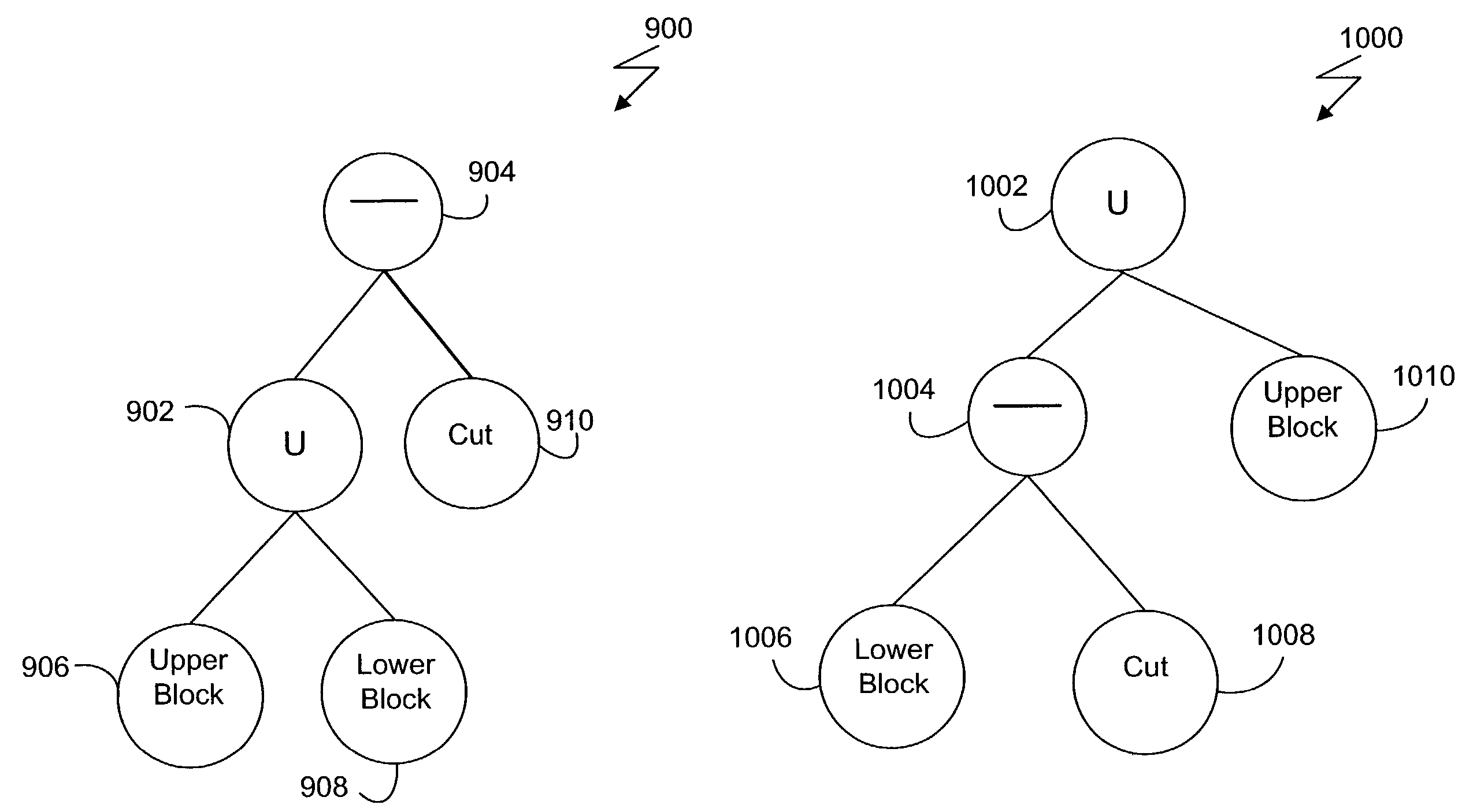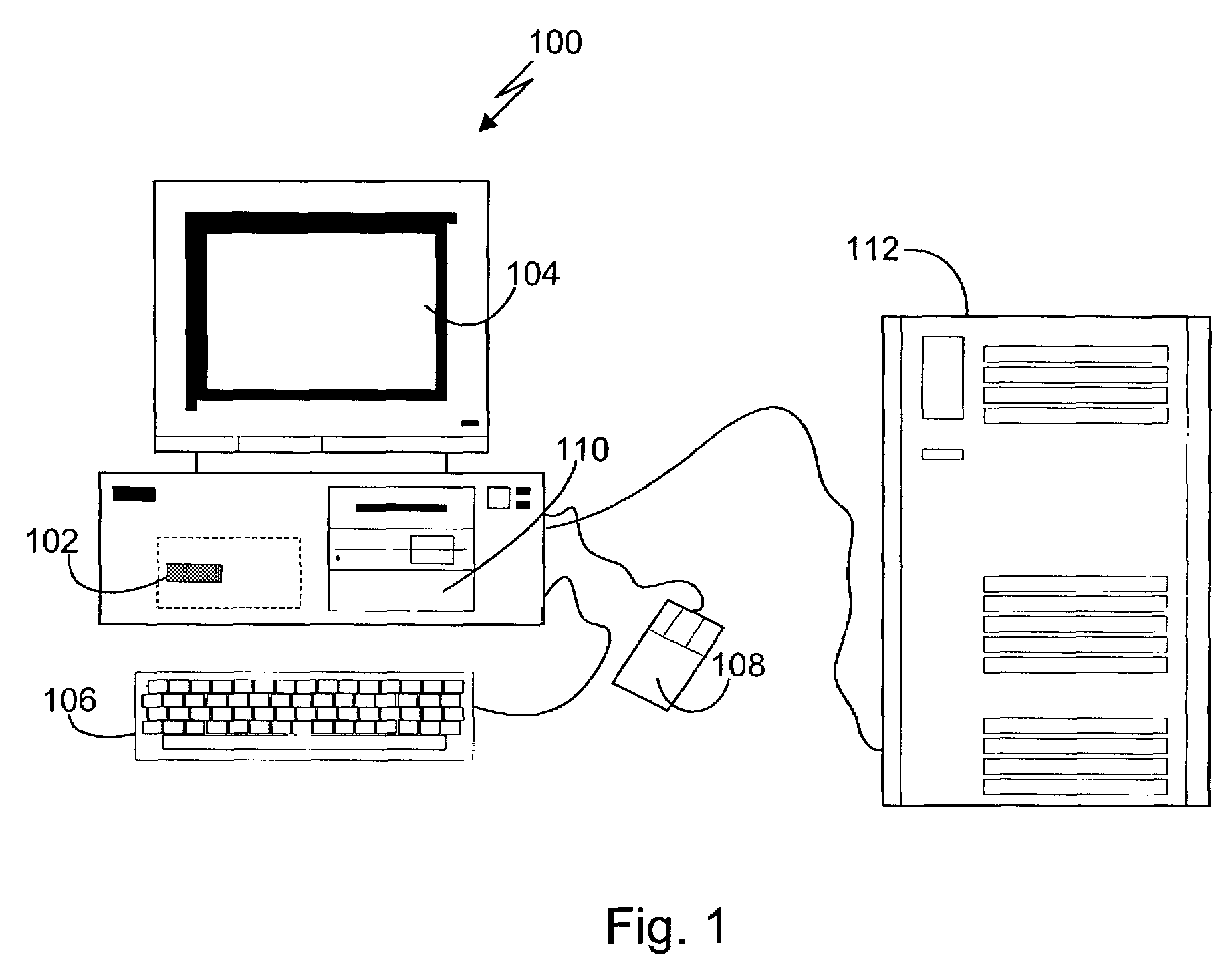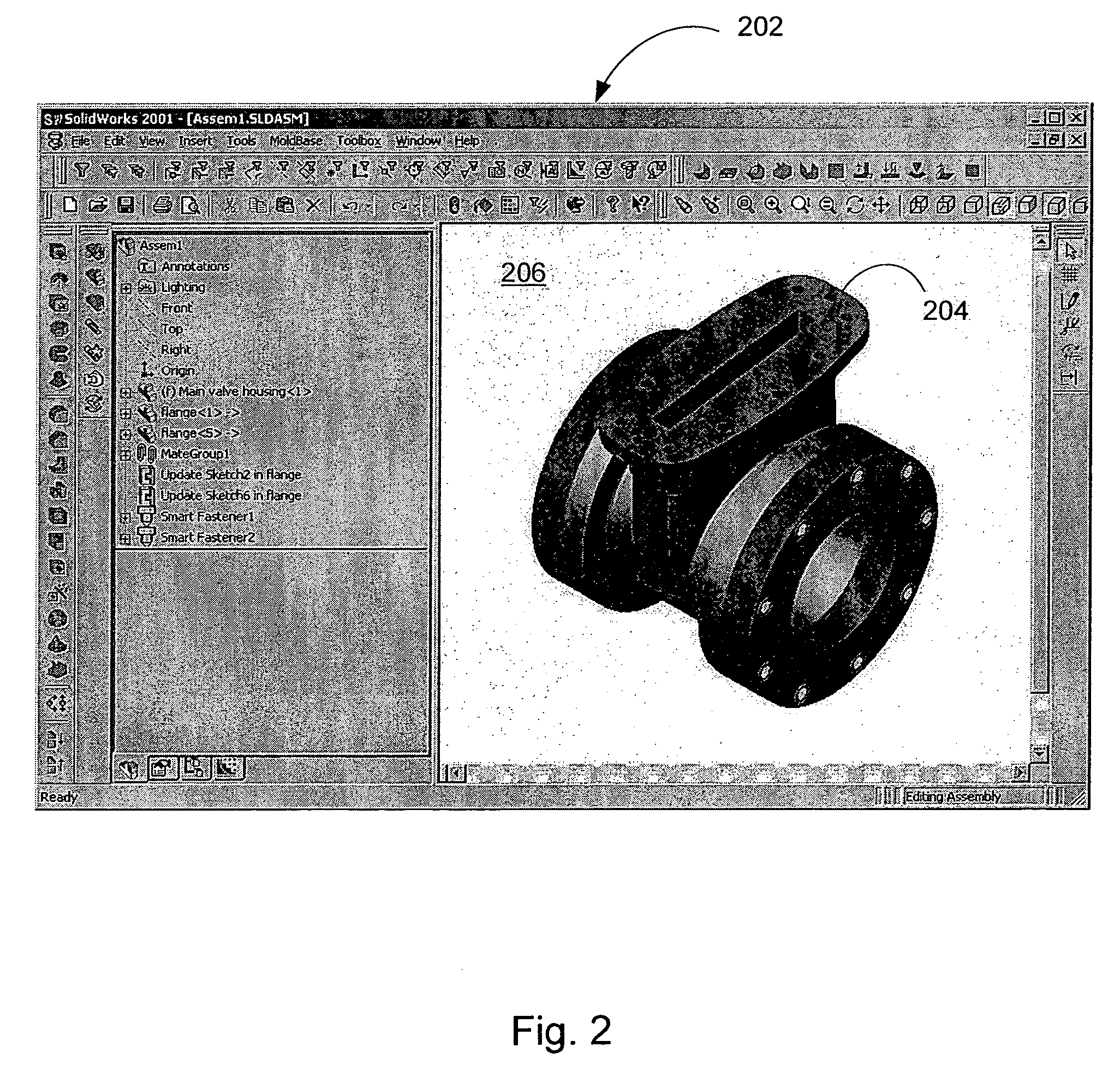Model management technology using grouping of features
a technology of model management and features, applied in the field of model management technology using grouping of features, can solve the problems of not always intuitive, re-designing the part is too time-consuming, modeling a part may require a great deal of planning and expertise, etc., and achieve the effect of facilitating explicit specification of scope definition
- Summary
- Abstract
- Description
- Claims
- Application Information
AI Technical Summary
Benefits of technology
Problems solved by technology
Method used
Image
Examples
Embodiment Construction
[0036]The present invention allows design engineers to design components without worrying about feature order. This is achieved by separating the concepts of feature creation order and feature regeneration order. Therefore, the order in which a user adds features to a component is independent of the order in which the geometric feature operations (e.g., applying a boss or applying a cut) are applied to the underlying geometric model. The present invention provides a mechanism that automatically determines feature regeneration order independent of the user's feature creation order. Such an automated mechanism saves the design engineer an enormous amount of time and effort during the 3D modeling process because he or she is freed from redesigning parts and / or manipulating the order of features to correct geometry. Unlike conventional feature-based modeling systems wherein the feature regeneration order is defined and controlled solely by the user, the present invention controls the re...
PUM
 Login to View More
Login to View More Abstract
Description
Claims
Application Information
 Login to View More
Login to View More - R&D
- Intellectual Property
- Life Sciences
- Materials
- Tech Scout
- Unparalleled Data Quality
- Higher Quality Content
- 60% Fewer Hallucinations
Browse by: Latest US Patents, China's latest patents, Technical Efficacy Thesaurus, Application Domain, Technology Topic, Popular Technical Reports.
© 2025 PatSnap. All rights reserved.Legal|Privacy policy|Modern Slavery Act Transparency Statement|Sitemap|About US| Contact US: help@patsnap.com



